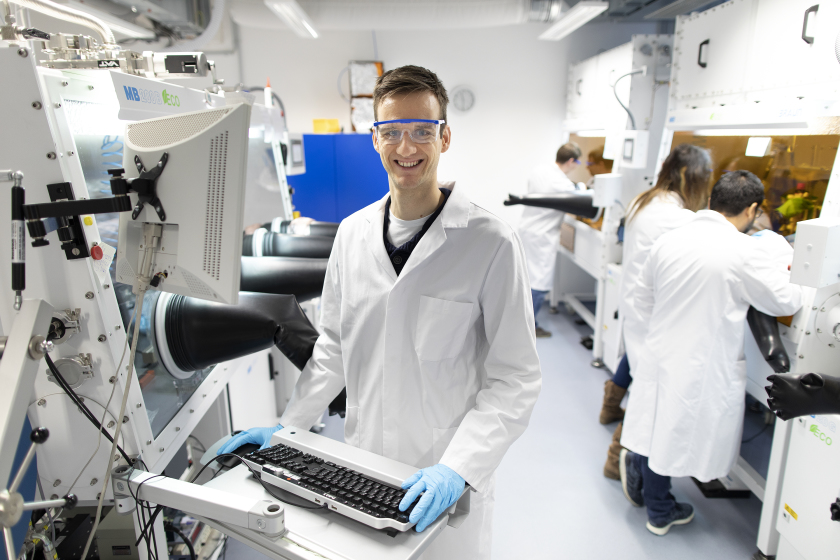Helmholtz Association promotes HZB cooperation with Slovenia on perovskite silicon tandem solar cells

Marko Jošt was a PhD student in the HySPRINT-Lab in Steve Albrecht's group. Now he will continue his research on tandem solar cells at the university of Lubljana. © M. Setzpfandt/ HZB
A HZB team has successfully raised funds from the “Helmholtz European Partnering Program” of the Helmholtz Association to expand cooperation with partners of the University of Ljubljana, Slovenia. The topics of the cooperation are tandem solar cells made of perovskite and silicon and, in particular, their precise characterisation.
Currently, most solar modules consist of silicon, a semiconductor that mainly uses the red parts of the solar spectrum to generate electricity. The combination of silicon with perovskite semiconductors therefore promises great opportunities for even higher efficiencies. Semiconductor materials from this material class convert the energy-rich, blue parts of the spectrum into electricity.
Now the HZB physicist Prof. Dr. Steve Albrecht has raised funds from the Helmholtz Association to investigate such tandem solar cells with partners from the University of Ljubljana, Slovenia. The TAPAS project is funded by the Helmholtz European Partnering programme for the next three years with 250,000 euros per year each. Following an evaluation, the funding period can be extended by two years. The Helmholtz European Partnering programme was set up to strengthen the European research area, in particular cooperation with countries in Southern, Central and Eastern Europe.
The name TAPAS stands for "Tandem Perovskite and Silicon solar cells - Advanced opto-electrical characterization, modeling and stability". Together with opto-electrical modelling, highly efficient and stable next-generation tandem solar cells are to be developed for the energy system of the future.
The Working Group for Photovoltaics and Optoelectronics at the University of Ljubljana (LPVO, headed by Prof. Dr Marko Topič) and the Helmholtz-Zentrum Berlin have established a very successful cooperation in recent years, which will be further strengthened by this funding. The aim of the cooperation is to analyse the processes that affect the stability of the modules in the field.
arö
https://www.helmholtz-berlin.de/pubbin/news_seite?nid=20800;sprache=en
- Copy link
-
Long-term stability for perovskite solar cells: a big step forward
Perovskite solar cells are inexpensive to produce and generate a high amount of electric power per surface area. However, they are not yet stable enough, losing efficiency more rapidly than the silicon market standard. Now, an international team led by Prof. Dr. Antonio Abate has dramatically increased their stability by applying a novel coating to the interface between the surface of the perovskite and the top contact layer. This has even boosted efficiency to almost 27%, which represents the state-of-the-art. After 1,200 hours of continuous operation under standard illumination, no decrease in efficiency was observed. The study involved research teams from China, Italy, Switzerland and Germany and has been published in Nature Photonics.
-
Successful master's degree in IR thermography on solar facades
We are delighted to congratulate our student employee Luca Raschke on successfully completing her Master's degree in Renewable Energies at the Hochschule für Technik und Wirtschaft Berlin - and with distinction!
-
BESSY II: Phosphorus chains – a 1D material with 1D electronic properties
For the first time, a team at BESSY II has succeeded in demonstrating the one-dimensional electronic properties in phosphorus. The samples consisted of short chains of phosphorus atoms that self-organise at specific angles on a silver substrate. Through sophisticated analysis, the team was able to disentangle the contributions of these differently aligned chains. This revealed that the electronic properties of each chain are indeed one-dimensional. Calculations predict an exciting phase transition to be expected as soon as these chains are more closely packed. While material consisting of individual chains with longer distances is semiconducting, a very dense chain structure would be metallic.
